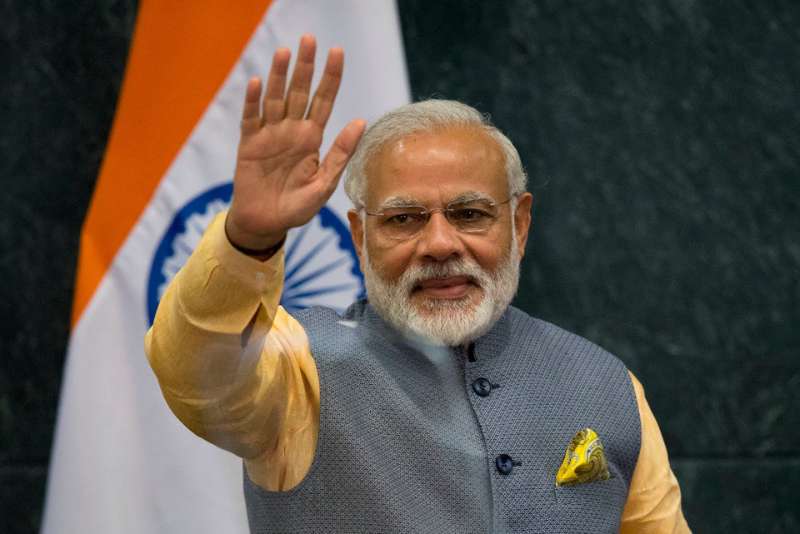
Gangtokian News Desk: On September 17, 2024, Narendra Modi marked his 74th birthday, an occasion coinciding with the 100-day milestone of his third term as India’s Prime Minister. Despite celebrations, including posters portraying Modi as a modern-day Vishwakarma in Patna, the last few months have been notably different for the leader once seen as unstoppable. The sense of invincibility that had surrounded him for the past decade appears to be waning.
A Changing Public Perception
The poster of Modi as Vishwakarma, once meant to bolster his image, has instead sparked mockery. Where such displays once drew widespread support, this time the response has been more skeptical. “Stop all this hypocrisy,” some have said, as the public sentiment shifts. The idolization of Modi as a near-divine figure seems to be fracturing, as people begin to question the rhetoric and promises of the past ten years.
As unemployment remains a pressing issue, the scenes outside recruitment centers offer a stark contrast to the once glowing promises of a “New India.” In Gujarat, thousands flocked to apply for just 600 jobs, with similar overcrowded scenes in Bharuch. These events highlight a nationwide reality: India’s job crisis persists, and Modi’s governance is now under sharper scrutiny.
Economic Initiatives and Infrastructure Push
Despite challenges, Modi’s third term has seen significant economic initiatives. The government has cleared and approved projects worth Rs 3 lakh crore, focusing primarily on infrastructure development in roads, railways, ports, and airways. This massive investment is expected to create jobs and stimulate economic growth. The increase in capital expenditure to Rs 11.11 lakh crore is particularly aimed at job creation.
In the agricultural sector, the government has released the 17th installment of the Prime Minister Kisan Samman Nidhi, distributing Rs 20,000 crore to 9.3 crore farmers. The approval of the Polavaram Irrigation Project in Andhra Pradesh, with an allocation of Rs 12,100 crore, is another significant development.
Welfare and Empowerment Initiatives
The Modi government has continued its focus on welfare schemes. The Prime Minister awarded certificates to 11 lakh new Lakhpati Didis in the first 100 days, with government data indicating that currently, more than 1 crore Lakhpati Didis have an annual income exceeding Rs 1 lakh. The MUDRA loan limit has been raised from Rs 10 lakh to Rs 20 lakh, potentially benefiting small entrepreneurs.
Under the Prime Minister’s Developed Tribal Village Campaign, the government aims to develop 63,000 tribal villages, targeting the socio-economic upliftment of 5 crore tribal individuals.
Criticism Mounts: The Legal System Speaks
Adding to the challenges is a recent Supreme Court ruling that temporarily halts the government’s practice of demolishing homes without legal proceedings. The Court has signaled a shift, indirectly criticizing the bulldozer politics championed by Modi and Yogi Adityanath. This legal rebuke came on Modi’s birthday, symbolizing how his political narrative is losing ground.
The Modi government, once a monolithic entity, now faces opposition and public discontent. The veneer of invincibility, carefully constructed over two terms, is beginning to erode, as his critics grow more vocal.
Economic Struggles, Political Fallout
Economically, Modi’s government is also facing growing dissatisfaction. Promises to reduce petrol prices and control inflation remain unfulfilled, and recent tax increases have hit the public hard. Notably, individual taxpayers are now contributing more than corporations. The widespread frustration is particularly acute among the middle class, many of whom had been staunch supporters of Modi during his earlier terms.
Unemployment remains a significant issue. In Haryana, 46,000 postgraduates applied for low-paying jobs as sweepers, further underscoring the country’s economic stagnation. Modi’s initial promises of job creation and economic reform are now being met with skepticism.
The Opposition Finds Its Voice
After a decade of perceived dormancy, India’s opposition parties are regrouping. They have found momentum, both inside and outside Parliament. Political dynamics are shifting, as Modi’s critics become more organized and vocal.
While Modi still commands substantial political influence, the public has started focusing on other leaders. The Modi-centric era of Indian politics appears to be facing its first serious test. His third term might be the beginning of a broader political realignment, where he is seen as a democratically elected Prime Minister, rather than a figure elevated to quasi-divine status by his followers.
The Future of Modi’s Leadership
Despite setbacks, Modi’s leadership remains significant. His policies and decisions continue to shape India’s political and economic landscape. However, as public faith in his invincibility erodes, it remains to be seen whether he can adapt to this new reality and restore the trust that carried him through two successful terms.
The coming months and years will likely determine whether this shift in public sentiment marks a permanent decline in Modi’s dominance or merely a temporary setback. One thing is certain: the discourse surrounding his leadership is changing, and India’s political landscape will never be the same.
Also Read: 5 Arrested in Connection with Torture Incident in Bihar’s Araria
Gangtokian Web Team, 18/09/2024
















































